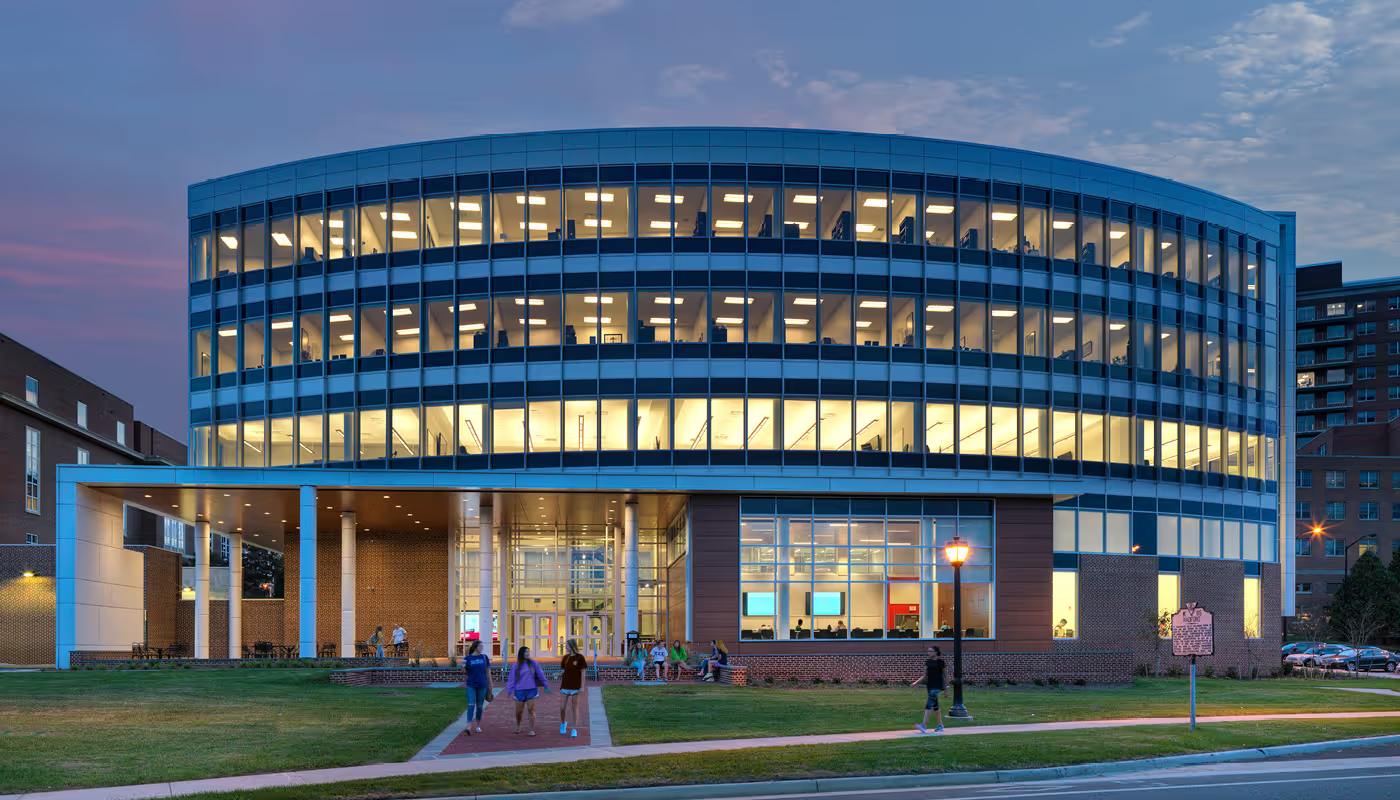
Radford University, Hemphill Hall
In Hemphill Hall, future journalists broadcast from professional studios while law students present arguments in a fully equipped moot courtroom just floors away. This dynamic home of Radford University's College of Humanities and Behavioral Sciences unites programs and faculty previously scattered across seven campus locations, creating an environment where collaboration happens naturally. Students share ideas in research centers and interactive laboratory spaces, while an academic advising center helps guide them on their educational journey. Each space within the building is designed to bridge classroom theory with professional practice.
Architectural Design
The building's architecture integrates Radford's traditional Georgian aesthetic with contemporary elements, particularly visible at the campus edge. Two main entrances reflect the university's emphasis on community engagement—one opens onto the central campus quad while the other faces East Main Street, representing the college's role in connecting campus life with the broader community.
Learning Spaces
The facility incorporates specialized spaces designed to prepare students for professional practice. A key feature is the emergency operations center (EOC), which serves dual purposes: it functions as a simulation space for criminal justice students and converts into an actual emergency response coordination center when needed by the university or City of Radford. Psychology students benefit from expanded research facilities and service-learning opportunities, while communication students work in professional-quality broadcasting studios.
Sustainability Achievement
Hemphill Hall earned LEED Gold certification, demonstrating Radford University's dedication to environmental stewardship. The building complies with energy conservation provisions of EPAct 2005 and reduces greenhouse gas emissions as required by EISA 2007. Environmental features include water-efficient plumbing fixtures that reduce consumption by 25 percent, exterior sun shading to minimize solar heat gain, and LED lighting throughout the facility. The construction process emphasized environmental responsibility, with 85 percent of construction waste diverted from landfills, and the incorporation of materials with 20 percent recycled content and 23 percent regional content. Additionally, 99 percent of wood products used are Forest Stewardship Certified.
Safety and Security
While maintaining an open and welcoming atmosphere, the building incorporates essential safety measures developed with campus police. These include electronic access controls, video monitoring systems, secure exterior roof access, site lighting, low-growth landscaping, and integration with the campus-wide emergency communication system.
Impact on Academic Life
According to Dr. Katherine Hawkins, former Dean of the College of Humanities and Behavioral Sciences, the building has enhanced the college's ability to prepare students for professional success. The facility's design encourages interdisciplinary collaboration among faculty and students, while its professional-grade facilities help students compete for internships and employment opportunities. The building serves nearly 2,400 students enrolled in 10 majors, including English, history, and political science, along with various minors and interdisciplinary programs.
Through its effective design, sustainable features, and advanced facilities, Hemphill Hall exemplifies Radford University's commitment to academic excellence, community engagement, and environmental responsibility.









































